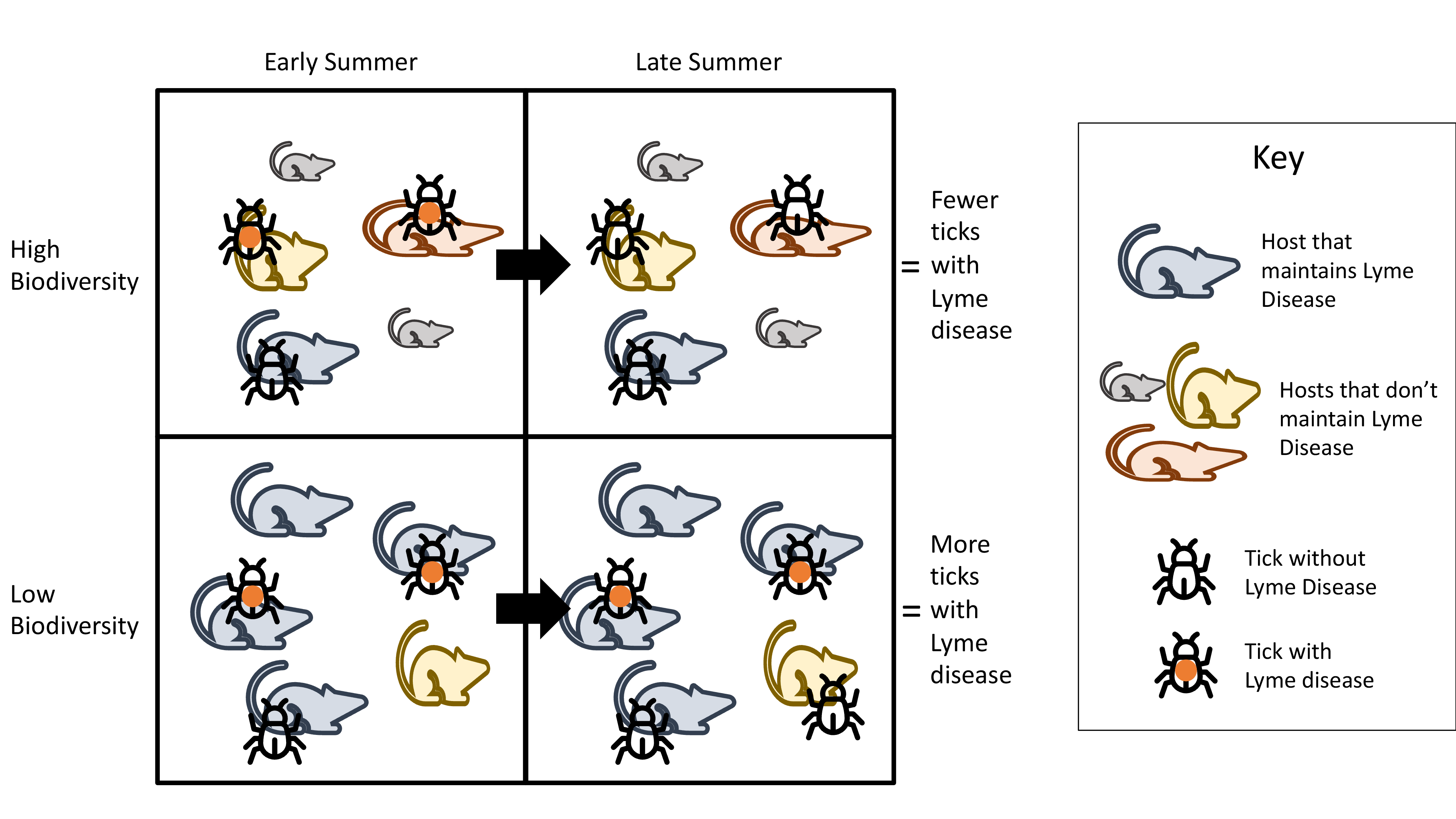Lyme disease is the most commonly reported tick-borne disease in the United States and its incidence is increasing. Small mammal biodiversity (e.g. mice, chipmunks, etc.) can reduce the prevalence of Lyme disease through the dilution of ticks among small mammal hosts, thus reducing the tick load on the species that best maintain the disease in nature. Since 2014, the National Ecological Observatory Network (NEON) has been collecting mammal and tick community information in the regions of highest Lyme disease incidence: the Great Lakes and New England.
PhD student Chris Wojan (Ecology, Evolution, and Behavior), in a project called “Can biodiversity reduce Lyme disease prevalence? A data-driven approach,” is using this data to explore two questions: 1) How does small mammal diversity influence both the distribution of ticks among hosts and how consistently individual hosts have ticks? and 2) How do environmental conditions influence these relationships?
With data retrieved from the NEON Data Repository, Mr. Wojan assesses the effect of mammal diversity on the presence of ticks on hosts capable of transmitting Lyme disease, while accounting for tick density and climate. In addition, he evaluates how mammal diversity affects repeated tick parasitism of individual hosts over time. This work will elucidate the complex relationship between biodiversity and disease risk in the Lyme disease system and identify characteristics of ecosystems that mitigate that risk.
Some funding for this project was provided by a DSI-MnDRIVE PhD Graduate Assistantship. The DSI-MnDRIVE Graduate Assistantship program supports U of M PhD candidates pursuing research at the intersection of data science and any of the five MnDRIVE areas:
- Robotics
- Global Food
- Environment
- Conditions
- Cancer Clinical Trials
Projects in this program must align with one of the Data Science Tracks:
- Foundational Data Science
- Digital Health and Personalized Health Care Delivery
This project is part of the Environment MnDRIVE area and the Foundational Data Science track. See the complete list of the RC-MnDRIVE Graduate Assistantships.
